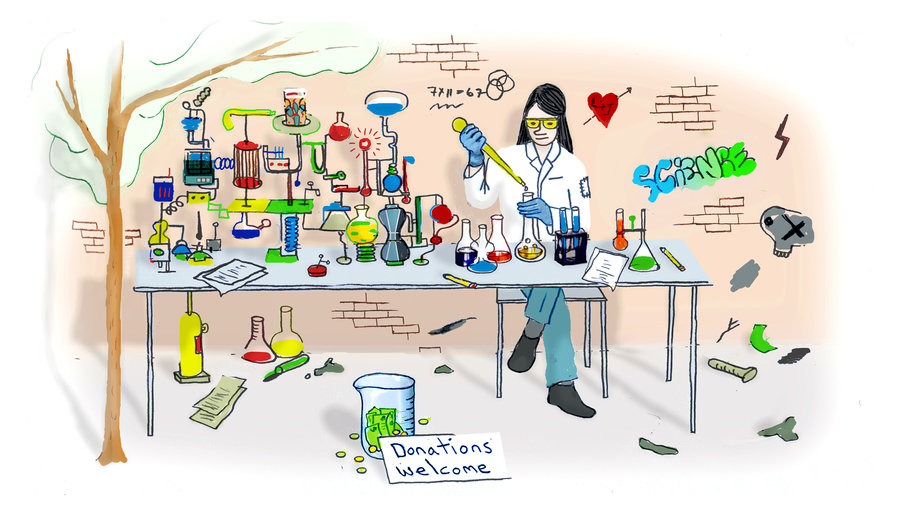Draft Manuscript for Innovations Article Innovation through research is a critical element to a nation’s success in the highly...
Draft Manuscript for Innovations Article
Innovation
through research is a critical element to a nation’s success in the highly
competitive global marketplace. University research provides the base
from which an important part of the most competitive innovations arise.
The modern research university, with synergy flowing from a mix of research,
graduate study and undergraduate instruction, is vital to simultaneously
generating needed knowledge while also educating future generations of
researchers and able graduates primed to take advantage of research
findings. In the
The
- Educate 85 percent of undergraduate students and 70 percent of
graduate students enrolled in all research universities.
- languages and
linguistics, mathematics and statistics, physical sciences and security.
- Serve as the primary route
to a research university degree for minority students, with more than 800,000
minority students enrolled in public research universities while just over
182,000 attend private institutions.
- Perform about 60 percent of the nation’s federally funded academic
research, some $34 billion annually.
- Serve as an engine for the economy—research at public
universities in fiscal year 2008 led to:
o
358
start-up companies,
o
2,891
new technology licenses (16,555 are actively in force),
o
6,460
applications for new patents, and
o
1,791
patents.[1]
In
recent decades and accelerating in the last two years, the state appropriation
per student for many U.S. research universities has deteriorated and their
ability to continue serve the nation’s research needs is threatened. In
addition, both public and private research universities have been harmed
financially as endowment balances declined along with the markets. The nation’s web of public and private
research universities is interdependent; significant weakening of major
research universities reduces the ability of the system to serve the nation’s
needs. Strong public and strong private universities are essential to
this nation’s future prosperity.
In 2005, the National Academy of Sciences published Rising Above the
Gathering Storm, a landmark report recommending many courses of action to
ensure the future competitiveness of the
Above the Gathering Storm was
initiated by a request from members of Congress, Senators Barbara Mikulski
(D-MD) and Lamar Alexander (R-TN) and Representatives Bart Gordon (D-TN) and
Ralph Hall (R-TX) asked the National Academy of Sciences on June 22, 2009 to
initiate a new competitiveness study focused specifically on the health of
research universities. Their request expressed concern that
What are the top ten actions
that Congress, state governments, research universities, and others could take
to assure the ability of the American research university to maintain the
excellence in research and doctoral education needed to help the United States
compete, prosper and achieve national goals for health, energy, the
environment, and security in the global community of the 21st
century.[1]
The
National Academies agreed to perform the study and it is scheduled to begin its
work in 2010.
State Support
for Public Research Universities is Declining
Our focus is on public research
universities because evidence of their deteriorating financial situation forces
consideration of their critical ability to serve the nation’s needs in the
future. Writing in The Chronicle of Higher
Education this year, Paul Courant, James Duderstadt and Edie
Goldenberg describe a “failing” partnership between the states and federal
government:
Today, the state side of the partnership is failing. Public institutions of higher education are
gravely threatened. State support of
public universities, on a per student basis, has been declining for over two
decades; it was at the lowest level in 25 years even before the current
economic crisis. As the global recession
has deepened, declining tax revenues have driven state after state to further
reduce appropriations for higher education, with cuts ranging as high as 20% to
30%, threatening to cripple many of the nation’s leading state universities and
erode their world-class quality.[2]
The decline in state support during the period 1987-2007 has been especially severe at public universities classified by the Carnegie Foundation as “high” and “very high”
research universities.
Real per full-time enrolled (FTE) student state appropriations revenue declined
13.2 percent at very high research public universities and 12.9 percent at the
high research publics. This stands in contrast to the slightly smaller
real decline of 9.1 percent for all state higher education per FTE
student.

No comments